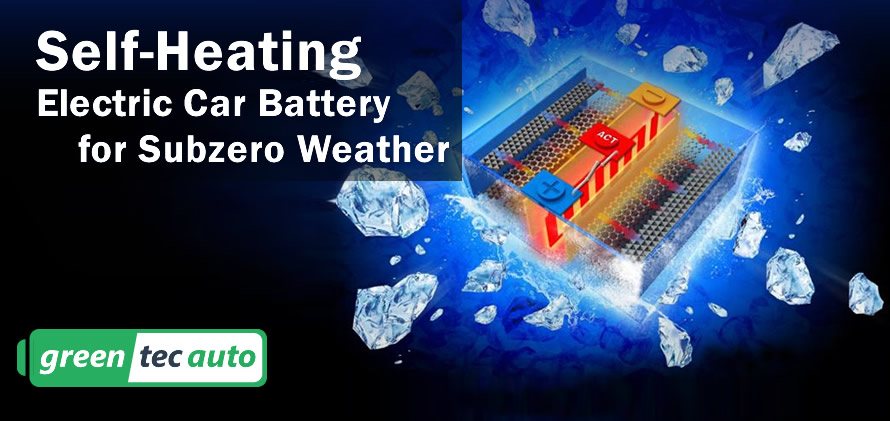In very cold weather, batteries in electric vehicles, hybrid cars, drones, space applications and some other instances slow down and perform poorly. Researchers at Penn State and the software company EC Power say they have a solution: a new lithium-ion battery that can self-heat if the temperature is lower than 32 degrees Fahrenheit. Basically, this would relieve lots of “range anxiety” for electric-car owners, say the researchers. This might be a ‘cold weather car battery’ solution for all drivers using their electric cars during the freezing winters.
Conventional car batteries at below freezing temperatures suffer severe power loss, which leads to slow charging in cold weather, restricted regenerative breaking and reduction of vehicle cruise range by as much as 40 percent, the researchers said in Nature. These problems require larger and more expensive battery packs to compensate for the cold sapping of energy.
“We don’t want electric cars to lose 40 to 50 percent of their cruise range in frigid weather as reported by the American Automobile Association and we don’t want the cold weather to exacerbate range anxiety,” said Wang. “In cold winters, range anxiety is the last thing we need.”
The researchers, relying on previous patents by EC Power, developed the all-climate battery to weigh only 1.5 percent more and cost only 0.04 percent of the base battery. They also designed it to go from -4 to 32 degrees Fahrenheit within 20 seconds and from -22 to 32 degrees Fahrenheit in 30 seconds and consume only 3.8 percent and 5.5 percent of the cell’s capacity. This is far less than the 40 percent loss in conventional lithium ion batteries.
The all-climate car battery uses a nickel foil of 50-micrometer thickness with one end attached to the negative terminal and the other extending outside the cell to create a third terminal. A temperature sensor attached to a switch causes electrons to flow through the nickel foil to complete the circuit. This rapidly heats up the nickel foil through resistance heating and warms the inside of the battery. Once the battery is at 32 degrees Fahrenheit, the switch turns off and the electric current flows in the normal manner.
While other materials could also serve as a resistance-heating element, nickel is low cost and works well.
“Next we would like to broaden the work to a new paradigm called SmartBattery,” said Wang. “We think we can use similar structures or principles to actively regulate the battery’s safety, performance and life.”
How cold weather car battery works

a, Schematic in which a metal foil is inserted to generate internal heating from a low temperature and to provide fast heat transfer to electrodes and electrolyte. This self-heating function is activated by turning off the switch between the activation terminal and the negative terminal.
b, Cell voltage and temperature evolutions during Vact = 0.4 V activation (inset) and subsequent 1C discharge at −20 °C. The battery temperature rises from −20 °C to 0 °C in ~20 s and the 1C discharge thereafter occurs at the ~0 °C battery core temperature rather than the −20 °C ambient temperature.
Source: materials and photo provided by Penn State.
Journal Reference: Chao-Yang Wang, Guangsheng Zhang, Shanhai Ge, Terrence Xu, Yan Ji, Xiao-Guang Yang, Yongjun Leng. Lithium-ion battery structure that self-heats at low temperatures. Nature, 2016; DOI: 10.1038/nature16502
GreenTec Auto is a family owned and operated business specializing in rebuilding hybrid batteries. Originally based in the Sacramento, California area since 2009, GreenTec Auto has expanded to 25+ shops around the United States. Combined with 35 years of general automotive experience, GreenTec Auto knows your hybrid vehicle from the end to end. For more information, visit www.greentecauto.com.

